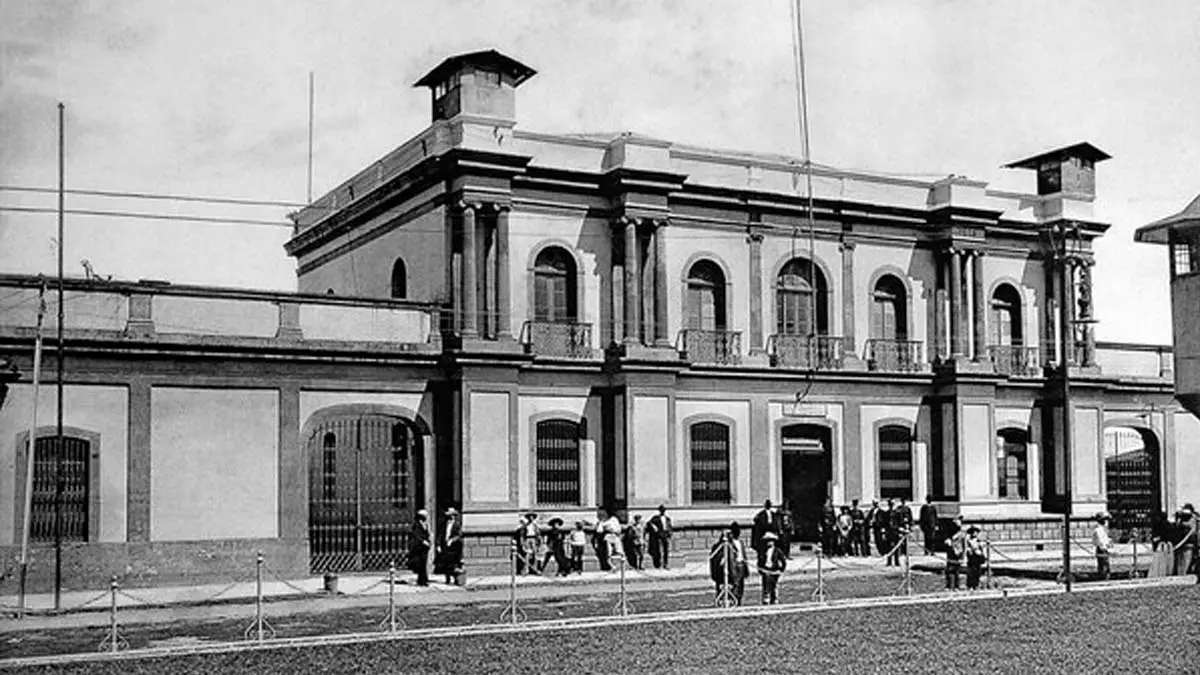
Located in the heart of the city of San José, they were the most important buildings of the time in Costa Rica. Both palaces broke with the Spanish colonial tradition, to use an architectural language adapting the national environment to a more European style.
The Presidential Palace of Costa Rica
It was built between 1866 and 1869 during the government of José María Castro Madriz, originally conceived to house the School of Arts and Crafts that was never inaugurated since it was preferred to house the office of the executive power and the residence of the president and his family.
The work was in charge of the Mexican engineer Ángel Miguel Velásquez, who was a disciple of Francesco Saverio Cavallari. It was located next to the old Mint that is currently Banco Nacional de Costa Rica.
Architecture
Classical in style, it is an elegant two-story building, with eight Ionic columns on its facade, a large Carrara marble staircase, large halls, galleries and other elements that tried to imitate the palatial style of the courts of Europe. The cost of the building was $ 75,886.75 at the time, excluding furniture.
The building was converted into a Presidential Palace by order of General Tomás Guardia Gutiérrez. It was properly conditioned, furnished and sumptuously decorated. Chippendale-style furniture, romantic paintings, Sèvres porcelain, French gobelins adorned its walls, and tableware was purchased from Le Bon Marché warehouse.
A boudoir was arranged for the first lady and her daughter. There was a men’s smoking lounge, game room, ladies’ lounge, and a spacious reception room. It even had an elegant chapel, which was erected in perpetual oratory by Pope Pius IX.
History of the Presidential Palace
It was used as a Presidential Palace from 1882 to 1894. Witness to the greatest national political and social events of the time. On August 9, 1884, from the balconies of the Palace and in front of a crowd from all over the Central Valley, President Próspero Fernández Oreamuno, inaugurated the first electric lighting system in the country.
Later, the Ministry of War moved its headquarters to the building, to later become the Artillery Plaza Command, headquarters of the General Staff.
During the first Defacto government of José Figueres Ferrer, its demolition was ordered with the purpose of expanding the structure of the National Bank.
National Palace of Costa Rica
The National Palace of Costa Rica was built between 1853 and 1855 by order of President Juan Rafael Mora Porras, destined to be the headquarters of the three Powers of the newborn Republic.
History of the National Palace

In 1850, with the rise of Juan Rafael Mora Porras to power and the consolidation of the coffee bourgeoisie class, Costa Rica entered a period of economic and social boom.
The central power was strengthened and localisms were suppressed, Costa Rican society became more complex and diverse, and the coffee economy became the engine of national progress.
San José, the capital of the young Republic, began to change its small town appearance to gradually transform itself into a city.
Counting on the advice and technical capacity of some European citizens in his close circle, President Mora promoted the construction of several buildings that reflect that spirit of growth and advancement.
In 1854, Mora named the German engineer and architect Franz Kurtze as the first general director of Public Works. From the hand of Kurtze, several architectural works of great relevance to the country emerged: the Tridentino Seminary, the National Liquor Factory, the original building of the Hospital San Juan de Dios, the Tabernacle of the Cathedral, and the most important being the construction of the National Palace, whose purpose was to house the three powers of the Republic.
The construction of the Palace began in 1853, on the same land where the old Tobacco Factory of San José was located. This site was relevant given that the first temple of the Church of La Merced, the Government House, the Congress, the Court of Justice and other public buildings were located there.
The work started under the guidance of the engineer Ludwig von Charmier, who then gave the direction to Kurtze after a report by him and engineer Mariano Monte that objected to technical, seismic and economic aspects of Charmier’s work. After terminating the contract with Charmier, Kurtze took over the work.
The inauguration of the building was made on June 24, 1855. On the occasion of its inauguration, the General Director of Bands, Manuel María Gutiérrez Flores (author of the music of the National Anthem of Costa Rica) presented the President with a waltz entitled “The palace “.

